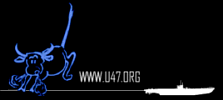| Posted: 09 February 2007 at 00:59 | IP Logged
|
|
|
Scapa Flow was the designated anchorage for the Royal Navy's Grand Fleet during WW1.
When the war began Scapa Flow was virtually undefended against the U-boat threat. With the Grand Fleet relocated to the area from Portsmouth, Plymouth and Chatam the defense of Scapa Flow was giving a high priority.
The initial defences were constucted by sinking 21 blockships and the deployment of anti-submarine indicator nets laid at various depths that were intended to entangle enemy submarines. Work continued with the laying of minefields and shore batteries.
These defences appeared to be working fairly well, however in 1916 shortly after the Battle of Jutland, (June 1916) Lord Kitchener the war minister and hero of Khartoum visited Scapa Flow en route to a diplomatic mission in Russia. Kitchener and his staff boarded the HMS Hampshire and put to sea through Hoy Sound. It became only to clear that the blockships had failed in their aim, a U-boat (U-75 commanded by Kurt Beitzen) had successfully crossed the flow and having reached Biscay further north had laid a mine. This mine struck HMS Hampshire on June 5th. Lord Kitchener was killed stunning the nation.
Kurt Beitzen was just recently in the news again when two WW1 U-boats were found off the Orkney Islands. The one boat believed to be U-102 was commanded by Beitzen, the U-102 along with the U-92 are believed to have wandered into a minefield in 1918.
sources; www.firstworldwar.com and www.show.me.uk
Edited by Panther44 on 09 February 2007 at 01:20
__________________
There are no roses on a sailors grave,
No lillies on an ocean wave,
The only tribute is a seagulls sweep,
And the teardrop that a sweetheart weeps.
|

 Active Topics
Active Topics  Memberlist
Memberlist  Search
Search 
 Topic: World War One and Scapa Flow (
Topic: World War One and Scapa Flow (


